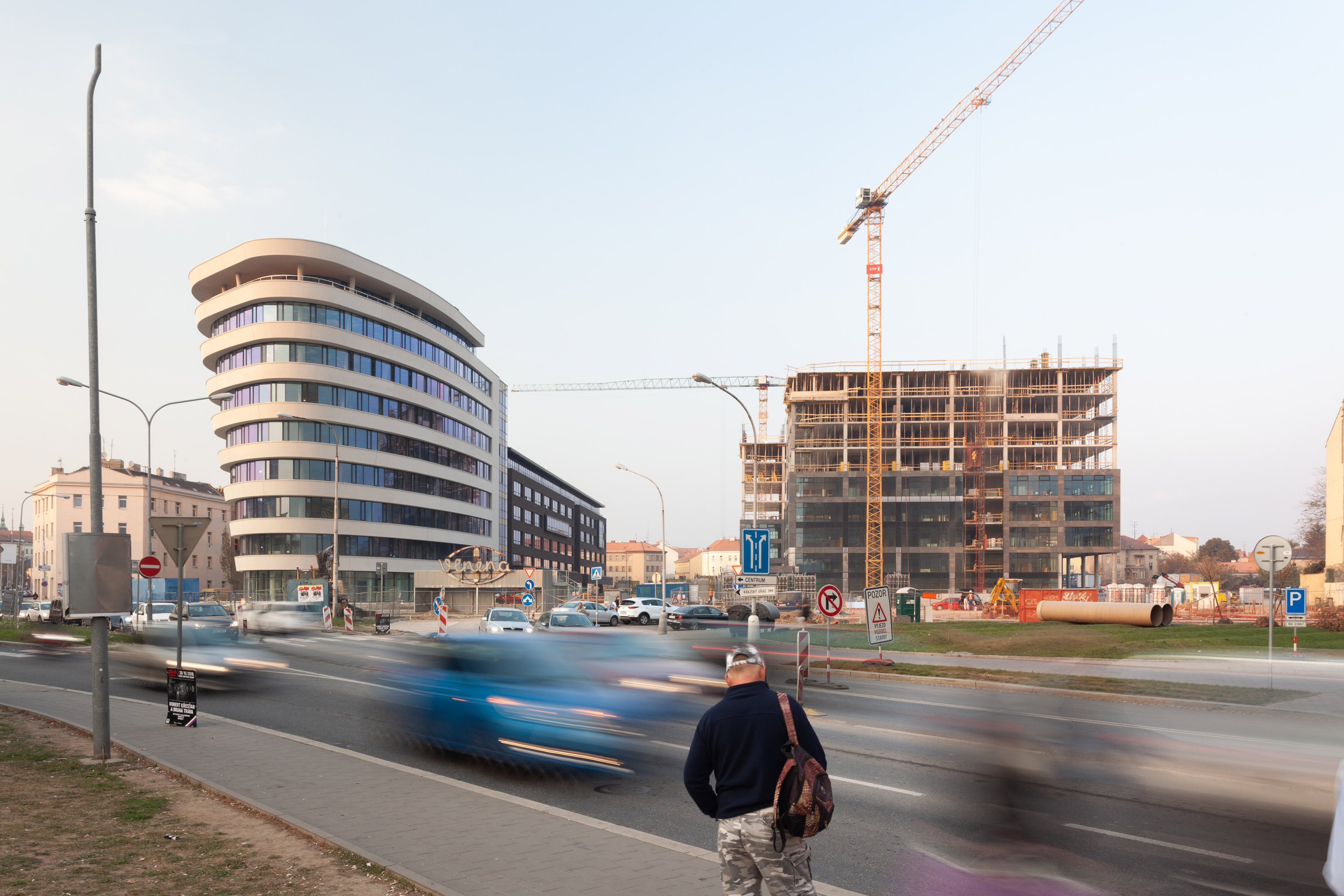
On the premises of a former textile factory in downtown Brno, CTP is realising our ambitious Vlněna project. After completion of the project Vlněna will offer a total rentable area of 100,000 m2.
Photographer: Alexandra Timpau
Vlněna is the most modern office project on the Brno market, and is being built to achieve BREEAM “Excellent” certification —a guarantee that workers there will not only feel good, but will work in a healthy and creative environment. The entire project is designed for sustainability, and suitably complements the surrounding city environment. The first buildings to be finished, near the main train station, has been occupied by Avast, the global leader in the digital security segment.
“Our Brno premises are comparable to our other locations, such as in Prague or San Francisco,” said Vince Steckler, Avast CEO. Other tenants include leading technology companies such as Moravia IT, STRV and Oracle.
“Overwhelmingly, the majority of clients attracted to Vlněna are companies operating in IT and modern technology. The office park suits their needs, particularly in terms of site design, office layout options and location,” says Jiří Kostečka, Senior Business Development Manager at CTP. “We believe that timeless products, with worldwide impact, will be developed in this location and we’ve created a space conducive to a sort of renaissance of European engineering and inventiveness here in Brno.”
Thanks to constant technological development, we can design more free and natural forms of architecture. Our main aim will always be the achievement of harmony, but we are increasingly interested in the influence of the users of our buildings.

A specific example of where we can see this is the interior work environment, in which we expect frequent redesigns. And we are talking not just about the shape itself, but rather about the feeling—free creation, uncompressed by the right angles of the traditional orthogonal system, is able to react more flexibly, and allows us to create user-friendly places.
Nowadays, we do not plan “monument” houses, but thanks to the adapt-ability of the building for future conversion and use of natural materials we can prevent expensive refurbishments later on.
Our work also responds to today’s dynamically changing housing requirements—for example, in Domeq 2 and 3 we designed a natural, clean and smart way of living for young people from around the world. There is not a washing machine in each apartment, but a common laundry room. Car-sharing and other shared services contribute to an environmentally friendly way of living, and respect the needs of the inhabitants.
The architecture of Studio acht has always sought to derive from the natural forms and logic and poetics of natural arrangements. This means the reconciliation of construction and design as seen in the Lookout Tower on Fajt’s Hill, or the bridge over the Svratka river in Brno. This approach is also reflected, in a broader scope and scale, in the creation of natural urban concepts and master plans, such as those of the Vlněna and Ponávka developments.
In Vlněna, the unconventional organic shape of the H building, the white “flagship” of the entire complex, reacts to the prominent building location within the area. Individual anomalies are then caused by the arrangement of internal spaces, mass modelling and the specific shape of the building site. The building is located in the main entrance corner of the site, and welcomes visitors into the new square in the middle, and also neighbours the diagonally led main street. It is in this locality that a large number of people are expected to move around and “wash” the building from three directions.
A pebble was the inspiration, whose curved shape is determined by the flow of water. For our physical stream of people, the building must not be a barrier, but an object that welcomes one to enter the newly emerging urban block that is designed to smoothly, almost organically, connect with the surroundings. The visually exposed building is meant to always look a little different depending on the viewer's position. This optical changeability naturally fits into the chosen concept of intermingling organic streams.
As you can see, I absolutely agree that biomimicry is of growing importance for design and architecture. Thanks to cur-rent technical and technological improvements, we can adapt more quickly and efficiently the internal form of architecture, taking into account the natural needs of the user as it is in the applied arts and industry. At the same time, the use of biomimicry should not only be “design for design’s sake”, but a real response to the needs of the building’s users.